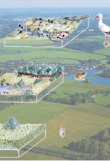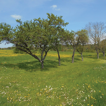In this collection

|
Papers published: 1 Documents added: 4 Printed version: Paperback Unique views: 394 Total views: 496 |
Scaling in Nature Conservation
Sort by:
Edited by Reinhard Klenke, Joseph Tzanopoulos, Doug Evans, Małgorzata Grodzińska-Jurczak, Yrjö Haila, William Kunin, Rui Ferreira dos Santos
The journal Nature Conservation has been founded by the European project SCALES “Securing the Conservation of biodiversity across Administrative Levels and spatial, temporal, and Ecological Scales” 10 years ago. The topic is still timely. To celebrate and further facilitate access to advances in our understanding of scaling issues and to support the application of this knowledge in the management and conservation of nature, Nature Conservation initiates a topical collection on Scaling in Nature Conservation.
Biodiversity loss and ecosystem changes are the outcomes of multiple drivers that often operate simultaneously and at various scales. Drivers of change do not work in isolation but they often interact. The way these different drives appear changes as we move across scales. Scale has relevance also for human activity. The main pressures on biodiversity and ecosystems (habitat loss and fragmentation, disturbance, and climate change) and the socio-economic drivers behind these pressures are also scale-dependent.
The collection serves to bring together the very wide experience from science, policy and practitioners on advancing our knowledge on the role of scales for nature conservation and on applying it in practical nature conservation.
In the collection we are looking for contributions addressing the following topics (among others):
- Scale sensitivity of drivers of biodiversity change
- Relations between scale (duration, frequency, speed, resolution, extent) of processes and thresholds in biodiversity change
- Impacts of socio-economic driving forces on biodiversity across scales
- Integration of our understanding of natural and anthropogenic processes and their effects upon biodiversity across spatial and temporal scales
- Importance of scale (temporal and spatial) for biodiversity monitoring
- Matching (Up- and downscaling) of biodiversity patterns and driving forces
- Development of scale-sensitive policies
- Advances in implementing nature conservation strategies across scales.
Biodiversity loss and ecosystem changes are the outcomes of multiple drivers that often operate simultaneously and at various scales. Drivers of change do not work in isolation but they often interact. The way these different drives appear changes as we move across scales. Scale has relevance also for human activity. The main pressures on biodiversity and ecosystems (habitat loss and fragmentation, disturbance, and climate change) and the socio-economic drivers behind these pressures are also scale-dependent.
The collection serves to bring together the very wide experience from science, policy and practitioners on advancing our knowledge on the role of scales for nature conservation and on applying it in practical nature conservation.
In the collection we are looking for contributions addressing the following topics (among others):
- Scale sensitivity of drivers of biodiversity change
- Relations between scale (duration, frequency, speed, resolution, extent) of processes and thresholds in biodiversity change
- Impacts of socio-economic driving forces on biodiversity across scales
- Integration of our understanding of natural and anthropogenic processes and their effects upon biodiversity across spatial and temporal scales
- Importance of scale (temporal and spatial) for biodiversity monitoring
- Matching (Up- and downscaling) of biodiversity patterns and driving forces
- Development of scale-sensitive policies
- Advances in implementing nature conservation strategies across scales.
Review Article
28-03-2024

